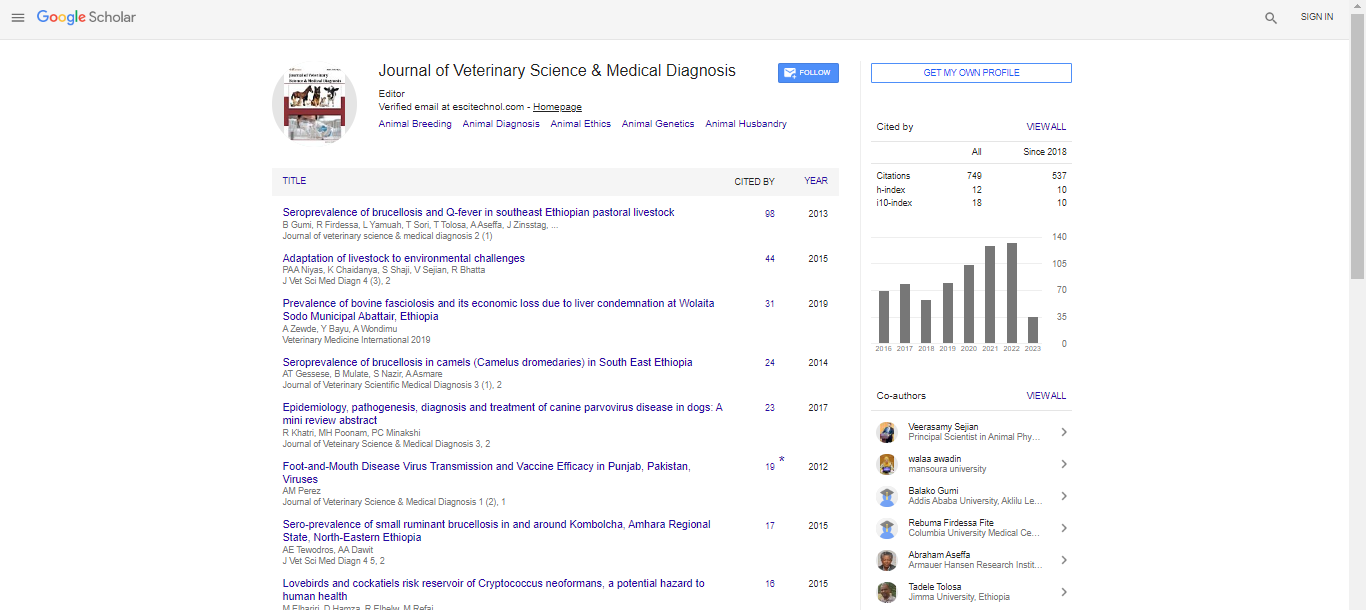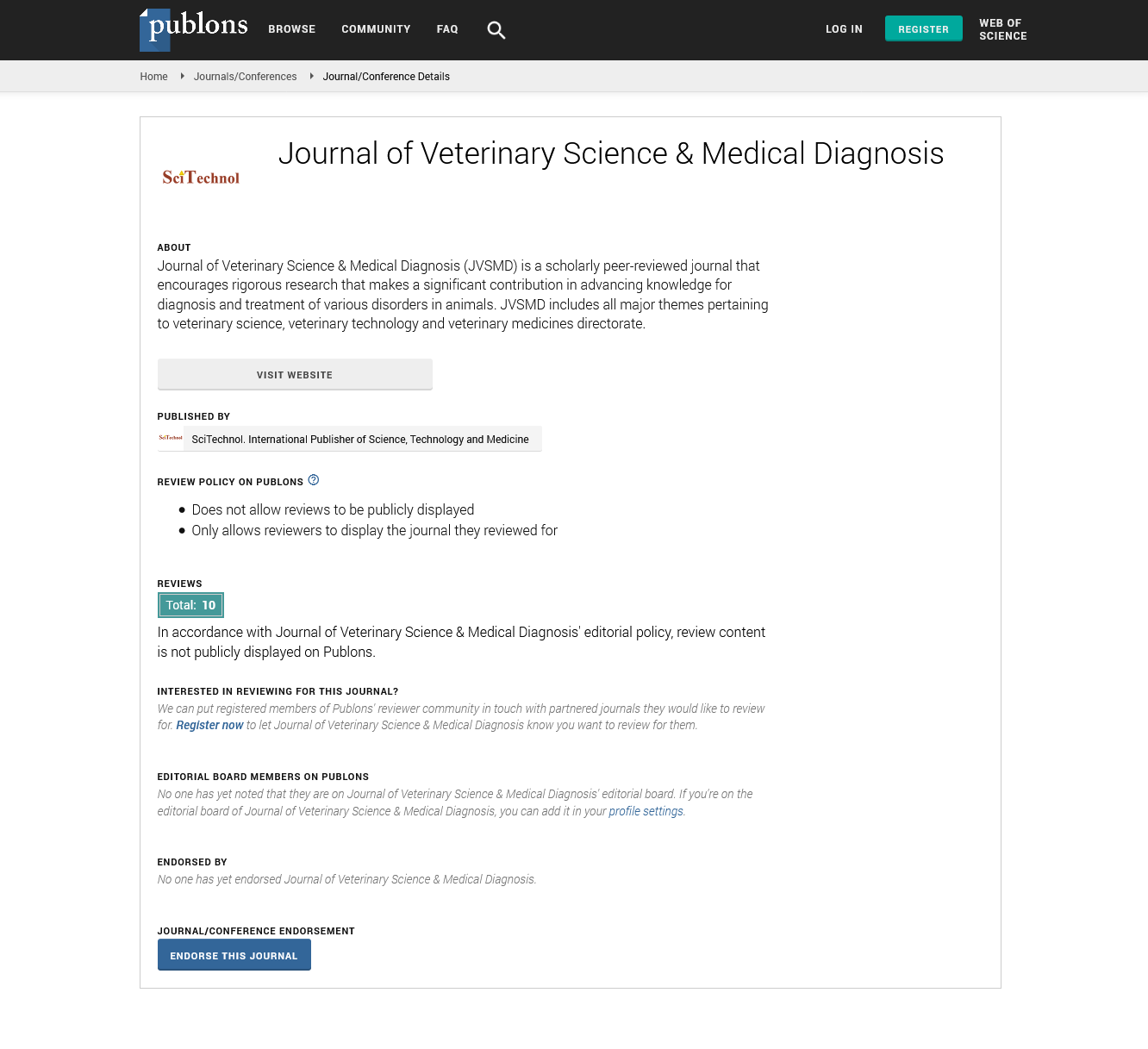Research Article, J Vet Sci Med Diagn Vol: 6 Issue: 1
Aluminium Silicate Clay as Mycotoxin Adsorbent in Dairy Cattle Feed
| Starý J, Čoudková V*, Vrbová A, Svoboda V and Maršálek M |
| Department of Zootechnical Sciences, University of South Bohemia, Czech Republic |
| Corresponding author : Mgr. Veronika Čoudková PhD Student, Department of Zootechnical Sciences, University of South Bohemia, Mažice 33, 391 81 Veselí nad Lužnicí, Czech Republic Tel: +420721268702 E-mail: Nika.13@seznam.cz |
| Received: December 30, 2016 Accepted: January 18, 2017 Published: January 23, 2017 |
| Citation: Starý J, Čoudková V, Vrbová A, Svoboda V, Maršálek M (2017) Aluminium Silicate Clay as Mycotoxin Adsorbent in Dairy Cattle Feed. J Vet Sci Med Diagn 6:1. doi: 10.4172/2325-9590.1000221 |
Abstract
The objective of the current study was to monitor the most common Fusarium mycotoxins Zearalenone (ZEA), T-2 toxin (T-2) and Deoxynivalenol (DON): in the occurence in dairy cows diet and its effect on dairy cows. Livestock health, welfare and productivity may be severely compromised by consumption of DON, T-2 toxin, ZEA and by interactions among these mycotoxins. Hydrated Sodium Calcium Aluminosilicate (HSCAS) helps to prevent the absorption of mycotoxins in the gut to prevent its symptoms. Influence of HSCAS intake to milk yield, components of milk and dairy diseases was evaluated. Research was located in South Bohemia in Central Europe. Four different types of feed which included grain mixes, corn silage, grass silage and hay, were sampled by ELISA. All samples of surveyed types of animal feed were positive for some of the monitored mycotoxins, however any of them didn‘t exeed guide values of EU Comittee recommendation for the content of mycotoxins in livestock feed. Co-occurrence of two mycotoxins was found at 56% of feed samples. It was observed 180 cows with HSCAS intake and 180 cows in the control group. It is concluded the positive impact of HSCAS intake on somatic cells count (SCC) in the milk by significant (p<0.05) reducing their number, on average 33,000 cells/ml. The occurence of diseases on average decreased by 17%, the largest positive effect was observed in the case of metabolic disorders. The results indicate that using of HSCAS has positive effect on milk yield, components of milk and occurence of cattle diseases by reduced impact of long-term exposure to subliminal doses of mycotoxins.
 Spanish
Spanish  Chinese
Chinese  Russian
Russian  German
German  French
French  Japanese
Japanese  Portuguese
Portuguese  Hindi
Hindi 
